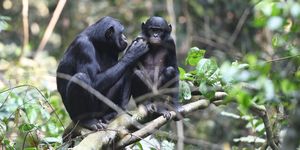Understanding How Cell Size is Controlled
Cell size can fluctuate because of biological processes, but a population of cells generally keeps their individual sizes to a standard. So how do cells control their size? Scientists at the University of California San Diego (UCSD) are making progress on answering this question. The team, led by UCSD biophysicist Suckjoon Jun, established that bacterial strains will generally keep cell size homeostatic, around the same size, regardless of how big they were when they started out. The researchers found that a process called ‘the adder’ guides the additive growth of cells from their birth to the point of division. Bacteria and yeast cells add roughly the same volume during their cell cycle.
Reporting in Current Biology, Jun, lead study authors Fangwei Si and Guillaume Le Treut, and colleagues have now learned more about the mechanisms of the adder. The researchers used two microbes, Escherichia coli (E. coli) and Bacillus subtilis (B. subtilis) to find that a cell needs to generate the right amount of proteins it will need for division, and the steady synthesis of those proteins as it elongates, as the cell grows to its typical size during the adder process.
"It's a very robust mechanism because each cell is guaranteed to reach its target cell size whether it is born large or small," said Jun, an associate professor in the Division of Biological Science's Section of Molecular Biology and the Division of Physical Sciences' Department of Physics. "The bottom line is that we found the adder is exclusively determined by some key proteins involved in cell division."
While two microbes were used for this work, the researchers believe that their findings apply to many types of cells across life forms. There are exceptions among eukaryotic cells, the researchers noted.
"Cell size homeostasis is a fundamental biological question, and to our knowledge, this is the first time we finally understand its mechanistic origin," said Jun. "We would not have been able to solve this with pure physics or pure biology. It was a very multidisciplinary approach." The research team was made up of engineers, biologists and physicists, who used a variety of experimental methods in their study, noted Jun.
The work continues. The scientists want to follow up on these processes in cancer cells and yeast to see how they work in those models.
This video above shows periodic production of green fluorescent-fusion division proteins. The adder principle is illustrated in the video below.
Sources: AAAS/Eurekalert! via UCSD, Current Biology









